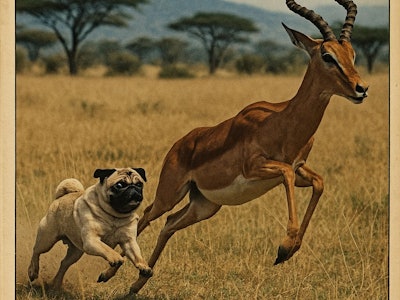
While pet foods tend to follow human food trends, some alternative protein sources have entered the pet food market before making their way to people’s plates. It says something about innovation in the pet food industry that insects don’t seem all that novel anymore. While hardly common, insect-based ingredients have grown in popularity with dog and cat owners by getting around some humans' aversions to arthropods. Dogs and cats eat bugs naturally, reducing pet owners' ick factors. Likewise, cats famously eat mice, so mouse meat has appeared as a novel ingredient in cat foods. Meanwhile, mouse meat remains less popular than insect-based protein powder in human diets. Both pets and humans eat bacteria, often unintentionally. However, people increasingly consume bacteria willingly, though usually under the more marketable term of biotics. Beyond probiotics, bacteria can also produce a novel pet food protein. These novel pet food ingredients have all appeared in recent news.
Mouse meat
Polish pet food supplier Zew Natury launched innovative additions to its lineup, including unconventional proteins and alternative diets. Among the newest launches are novel cat food offerings.
“We are diversifying our portfolio by releasing products with kangaroo meat, vegetarian pet food, and also products under our Fit range,” Adrian Wasyluk, manager at Zew Natury, told Petfood Industry. "For cats, we now offer food with mouse meat. With all of our products, our brand’s philosophy is to use 100% of fresh and natural ingredients, whether we’re talking about meat, vegetables or fruit."
Bacteria
Probiotics and prebiotics exemplify how bacteria have entered the pet food supply chain, without saying as much. Feeding bacteria to one’s pet doesn’t sound as good as giving them a probiotic. Bacterial products may play a larger role in future pet foods as protein from bacterial fermentation become more available. Bacterial proteins may also provide an option for formulating vegan pet foods. California-based Calysta introduced a bacterial protein pet food ingredient in Europe, FeedKind Pet. One dog treat made with the bacterial protein is now on shelves. Also, Calysta and Marsapet launched a complete dog food featuring FeedKind Pet protein, MicroBell dry kibble.
Impala
At Petfood Forum 2025, Angelique Myburgh, nutrition and development specialist, Montego Pet Nutrition, will offer insights into Africa’s role in providing this novel pet food protein source during her education session on Tuesday, April 29. Montego offers premium pet food for dogs and cats including dry food, treats and supplements made with novel, sustainable protein as its main ingredient.
“Typically, African game meat has a fat content of less than 3% with protein levels ranging from 21.4% in springbok to 23.8% in impala, aligning protein and fat composition to deer meat commonly known in the U.S.,” said Myburgh. “Additional health benefits include its low saturated fatty acid content and high levels of heme iron, vitamins and minerals.”
African antelopes are a local ingredient for Montego Pet Nutrition. Founded in 2000, Montego operates out of Graaf-Reinet, South Africa, producing 300 metric tons of pet food daily. The company produces dog treats using springbok (Antidorcas marsupials) as a novel protein source. Springbok live throughout south and southwest Africa. The International Union for the Conservation of Nature lists them as a species of least concern, meaning the springbok faces no immediate extinction threat.
Insect oil
Insect oil, derived from the larvae of the black soldier fly larvae (BSFL), is emerging as an alternative to traditional fats in pet food. Unlike insect protein, which focuses on amino acids for growth and nutrition, insect oil offers functional health benefits through its rich fatty acid profile, including lauric acid, a medium-chain fatty acid known for its antimicrobial properties. This makes it an attractive ingredient for supporting gut, skin and cognitive health in pets, particularly in premium and functional diets.
















